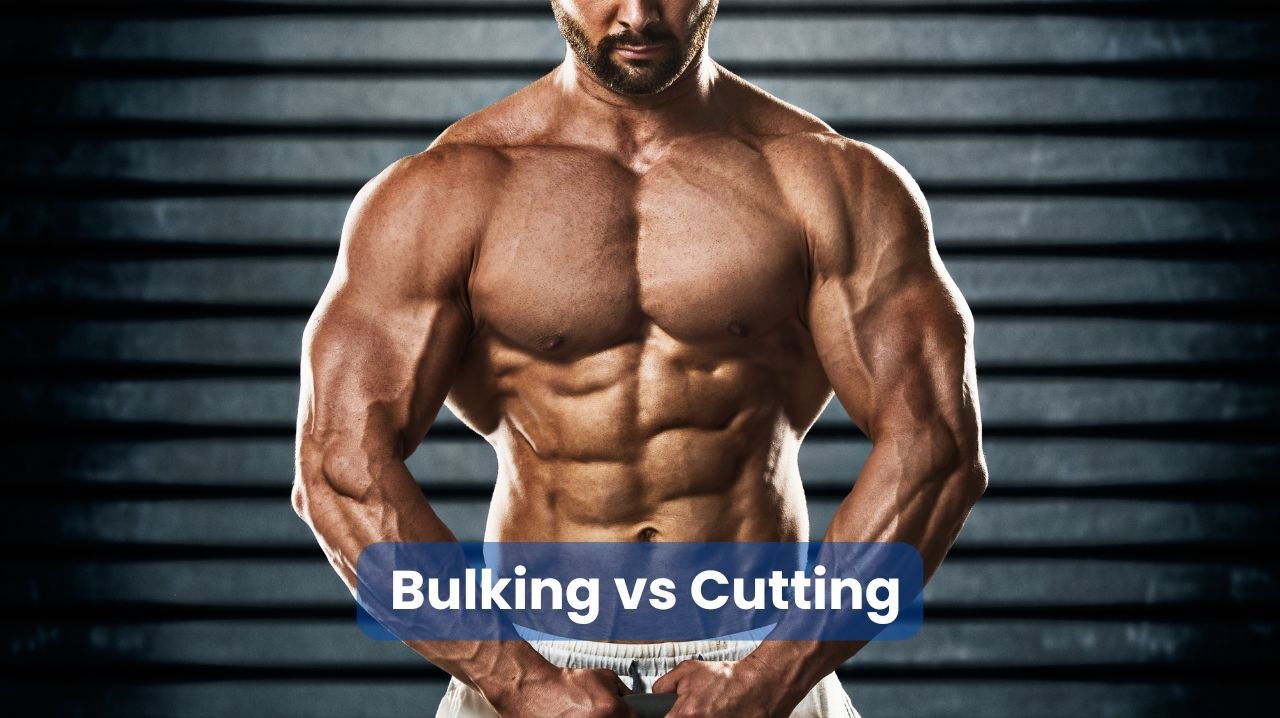Bulking vs Cutting: How to Optimize Your Bodybuilding Diet
For fitness enthusiasts and bodybuilders, the journey to achieve their ideal physique involves more than just lifting weights.
A crucial aspect of bodybuilding is understanding and implementing the right nutritional strategies. Two key concepts in this realm are “bulking” and “cutting.”
This article delves into these strategies, exploring how to optimize one’s diet for maximum muscle gain and fat loss.
👉 Pack On Muscle Mass and Get Bigger and Stronger
👉 Burn Fat and Get Seriously Ripped
👉 Get Explosive Strength and Maximum Stamina
👉 Become A Gym Beast With Legal SARMs Alternatives
Understanding Bulking and Cutting
What is Bulking?
Bulking is a phase in bodybuilding where the primary goal is to build muscle mass. During this period, individuals consume a caloric surplus – eating more calories than they burn. This excess energy provides the body with the resources needed to build new muscle tissue.
What is Cutting?
Cutting, on the other hand, is the phase focused on losing body fat while maintaining as much muscle mass as possible. This involves eating fewer calories than the body burns, creating a caloric deficit that forces the body to use stored fat for energy.
The Science Behind Muscle Growth and Fat Loss
To truly understand the principles of bulking and cutting, it’s essential to grasp the basic science behind muscle growth and fat loss.
Muscle Growth (Hypertrophy)
Muscle growth occurs when the rate of muscle protein synthesis exceeds the rate of muscle protein breakdown. This process, known as muscle hypertrophy, is stimulated by:
- Resistance training
- Adequate protein intake
- Sufficient calories
- Proper rest and recovery
Fat Loss
Fat loss happens when the body is in a state of caloric deficit. When fewer calories are consumed than expended, the body turns to its fat stores for energy. However, the body can also break down muscle for energy if the deficit is too severe or protein intake is inadequate.
Bulking: Strategies for Optimal Muscle Gain
Effective bulking requires a strategic approach to both diet and training. Here are key considerations:
Caloric Surplus
To gain muscle, one needs to eat more calories than they burn. However, the surplus should be moderate to avoid excessive fat gain. A good starting point is 300-500 calories above maintenance level.
Macronutrient Balance
The right balance of macronutrients is crucial for muscle growth:
- Protein: 1.6-2.2 grams per kilogram of body weight
- Carbohydrates: 4-7 grams per kilogram of body weight
- Fats: 20-30% of total calories
Meal Timing and Frequency
While total daily intake is most important, spreading protein intake throughout the day can be beneficial. Aim for 3-5 meals, ensuring each contains a good source of protein.
Foods for Bulking
Some nutrient-dense foods that are great for bulking include:
- Lean meats (chicken, turkey, lean beef)
- Fish (salmon, tuna, tilapia)
- Eggs and egg whites
- Dairy products (Greek yogurt, cottage cheese)
- Whole grains (brown rice, quinoa, oats)
- Legumes (beans, lentils)
- Nuts and seeds
- Fruits and vegetables
Supplements for Bulking
While whole foods should be the foundation of any diet, certain supplements can be beneficial during a bulk:
- Whey protein
- Creatine monohydrate
- Mass gainers (for those struggling to meet calorie needs)
Cutting: Strategies for Effective Fat Loss
Cutting requires a different approach, focusing on fat loss while preserving hard-earned muscle mass.
Caloric Deficit
To lose fat, one must create a caloric deficit. A moderate deficit of 300-500 calories below maintenance is often recommended to preserve muscle mass.
Macronutrient Adjustments
During a cut, macronutrient ratios often need adjustment:
- Protein: Increase to 2.0-2.4 grams per kilogram of body weight
- Carbohydrates: Reduce to accommodate the caloric deficit
- Fats: Maintain at least 15-20% of total calories for hormonal health
Meal Timing and Frequency
Some find that increasing meal frequency (to 5-6 smaller meals) helps control hunger during a cut. Others prefer intermittent fasting approaches. The best method is the one that’s sustainable for the individual.
Foods for Cutting
Focus on nutrient-dense, low-calorie foods such as:
- Lean proteins (chicken breast, white fish, lean beef)
- Fibrous vegetables (broccoli, spinach, cauliflower)
- Low-fat dairy (Greek yogurt, cottage cheese)
- Fruits (berries, apples)
- Whole grains in moderation
- Legumes
Supplements for Cutting
Certain supplements can support fat loss efforts:
- Whey protein (to help meet higher protein needs)
- Caffeine (for its metabolism-boosting and appetite-suppressing effects)
- Fiber supplements (to increase satiety)
Comparing Bulking and Cutting Approaches
To better understand the differences between bulking and cutting, let’s compare key aspects:
| Aspect | Bulking | Cutting |
|---|---|---|
| Calorie Balance | Surplus (300-500 above maintenance) | Deficit (300-500 below maintenance) |
| Protein Intake | 1.6-2.2g per kg body weight | 2.0-2.4g per kg body weight |
| Carbohydrate Intake | Higher (4-7g per kg body weight) | Lower (adjust to accommodate deficit) |
| Fat Intake | 20-30% of total calories | 15-20% of total calories |
| Main Goal | Muscle gain | Fat loss |
| Training Focus | Heavy lifting, progressive overload | Maintain strength, possible increase in cardio |
Common Mistakes to Avoid
Both bulking and cutting can be challenging, and there are several common pitfalls to be aware of:
Bulking Mistakes
- Excessive calorie surplus leading to unnecessary fat gain
- Not eating enough protein
- Neglecting micronutrients
- Overreliance on supplements
- Inconsistent training
Cutting Mistakes
- Too severe calorie restriction
- Inadequate protein intake
- Completely eliminating food groups
- Overtraining
- Neglecting strength training
The Importance of Tracking and Adjusting
Whether bulking or cutting, tracking progress and making necessary adjustments is crucial for success.
Tracking Methods
- Body weight (daily or weekly averages)
- Body measurements
- Progress photos
- Strength levels in the gym
- Energy levels and mood
When and How to Adjust
If progress stalls, consider making small adjustments:
- For bulking: Increase calories by 100-200 per day
- For cutting: Decrease calories by 100-200 per day or increase activity level
Always make one change at a time and assess its impact before making further adjustments.
Transitioning Between Bulking and Cutting
Transitioning between bulking and cutting phases requires careful planning to maintain progress and minimize unwanted effects.
From Bulk to Cut
- Gradually reduce calorie intake over 1-2 weeks
- Increase protein intake slightly
- Slowly introduce more cardiovascular exercise
- Maintain strength training volume and intensity
From Cut to Bulk
- Gradually increase calorie intake over 1-2 weeks
- Adjust macronutrients to support muscle growth
- Reduce cardio if it was increased during the cut
- Focus on progressive overload in strength training
The Role of Rest and Recovery
Regardless of whether one is bulking or cutting, adequate rest and recovery are crucial for progress.
- Aim for 7-9 hours of quality sleep per night
- Include rest days in your training schedule
- Consider active recovery activities like yoga or light cardio
- Manage stress through techniques like meditation or deep breathing exercises
Tailoring Your Approach
It’s important to remember that there’s no one-size-fits-all approach to bulking and cutting. Factors to consider when personalizing your strategy include:
- Body type and metabolism
- Training experience
- Lifestyle and daily activity level
- Personal preferences and food tolerances
- Specific fitness goals
👉 Boost in Focus and Energy to Help Increase Pumps and Performance
👉 Increase Gains, Promote Muscle Growth and Boost Energy
👉 Powerful Muscle Growth, Increased Blood Flow, and Enhanced Pumps
👉 Bulk-Up, Increase Gains, And Improve Recovery
Conclusion
Mastering the art of bulking and cutting is a journey that requires patience, consistency, and a willingness to learn and adjust. By understanding the principles behind muscle growth and fat loss, implementing appropriate nutritional strategies, and avoiding common pitfalls, individuals can optimize their bodybuilding diet to achieve their desired physique.
Remember, the most effective approach is one that can be sustained over time. It’s not just about short-term changes, but about developing a lifestyle that supports long-term health and fitness goals. Whether bulking to build muscle or cutting to reveal definition, the key is to stay committed, track progress, and make informed adjustments along the way.
With the right knowledge and dedication, anyone can successfully navigate the cycles of bulking and cutting to sculpt their ideal physique. The journey may be challenging, but the results are well worth the effort.







